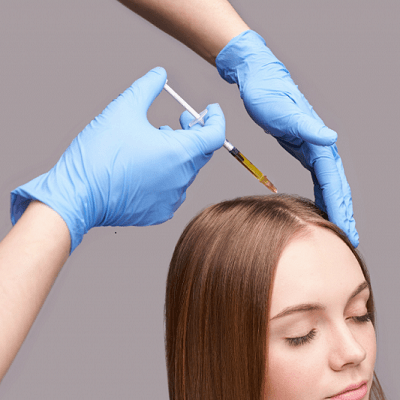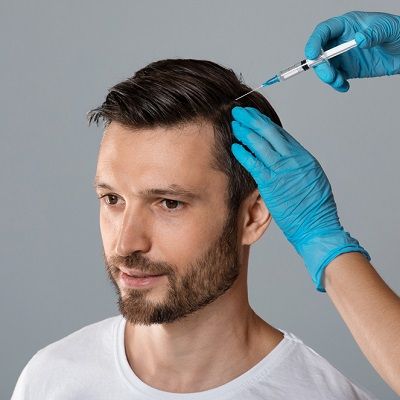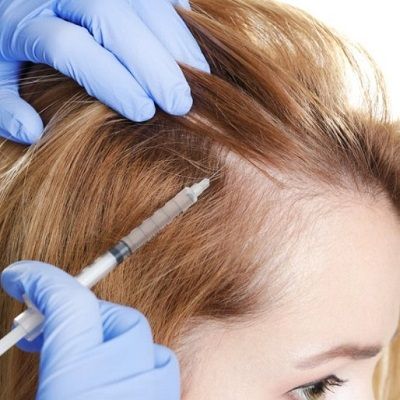
How to Get The Best Results From PRP Therapy.
Cutting-edge therapies are assisting millions of individuals worldwide in healing faster, regaining mobility, and living the lives they desire following painful injuries, wounds, and chronic diseases. Even the most effective therapy can be improved. Patients have every incentive to learn how to apply natural approaches and lifestyle guidelines to maximise the benefits of today’s innovative therapies from a holistic standpoint. This is undoubtedly the case when it comes to platelet-rich plasma (PRP) therapy.
PRP Hair treatment in Dubai is an outpatient injection-based treatment that uses your blood to mend damaged or wounded tissue. Following a blood draw, the blood is spun down in a centrifuge following a blood draw to separate your plasma and platelets. The “formula” generated is rich in growth factors that can aid in tissue repair and restoration. Many people report feeling “brand new” after receiving platelet-rich plasma injections in the face of debilitating, long-term tissue injury.
PRP therapy is undeniably a promising option based merely on science. However, people who choose PRP therapy can improve their results by making a few simple lifestyle adjustments. Everything from modest dietary changes to supplementation may help some people achieve better results. The good news is that most of us should be performing these activities in our everyday lives even if PRP effectiveness isn’t a driving factor.
Examine how to get the most out of PRP therapy for hair loss treatment.
Consumption of Folate-Rich Foods (VITAMIN B9):
Folate is a B vitamin that is essential for the health and strength of our blood cells. Getting enough folate helps the newly injected blood cells from PRP therapy grow more quickly. Unfortunately, many people do not consume enough folate. Adults over 19 require 400 micrograms of folate per day in their diet. For pregnant and breastfeeding women, the recommended is higher. Fortunately, with some careful preparation, folate is a pretty simple nutrient to incorporate into our diets. High-folate foods include the following items:
- Spinach.
- Vegetables with dark leaves.
- Liver of beef.
- Beans with kidneys.
- Peas, black-eyed.
- Rice.
- Citrus juice.
- Oranges just picked.
- Breakfast cereals and bars with added vitamins.
When feasible, folate should be obtained through natural, whole foods such as spinach or fresh oranges. While meals that are “enhanced” with folate still contribute to the daily recommended consumption, they may also contain extra sugars or carbohydrates, which can be harmful to one’s health. Getting folate from sources like liver or spinach has the extra benefit of providing minerals like iron and protein.
Getting a Lot of Iron:
Anyone looking to maximise the effects of PRP therapy should consider taking daily iron. Iron, like folate, aids in the production of healthy red blood cells. The following are some examples of foods high in iron:
- Liver of beef.
- Spinach.
- Eggs.
- Lentils.
- Chocolate, dark.
- Cereals fortified.
- Beans with kidneys.
People who want to boost their iron levels shouldn’t assume that just because dark chocolate is on the list means they may eat as much as they like. While a square of high-quality dark chocolate is a good source of iron, that doesn’t indicate that consuming chocolate can improve your PRP results! Natural, whole meals that aren’t high in refined sugars are healthier iron sources.
Platelet-Reducing Foods and Drinks to Avoid:
Specific diets have been shown to lower platelet levels. Many foods on the platelet-reduction list are considered highly nutritious, whole foods that belong to a balanced diet, which is unexpected to many people wanting to increase PRP outcomes naturally. While these foods are healthful, they may not be the best choice for a PRP patient during their early recovery. Here are some foods that can lower your platelet count:
- Water tonic (quinine).
- Juice from cranberries.
- Milk from cows.
- Alcohol.
- Garlic.
Alcohol is the most crucial issue to focus on during the post-PRP phase for people concerned about platelet count. Because long-term study shows that alcohol reduces the number of platelets in the circulation by inhibiting blood-cell synthesis, this is a good thing. Furthermore, the platelets produced are “less sticky” than “regular” platelets.
Smoking and Drug Use Should be Avoided:
For decades, there has been a correlation between smoking cigarettes and delayed wound healing. It is detrimental to continue smoking while receiving PRP therapy. PRP patients should also be aware of any medications that may hinder or stop the healing process.
Regular Cardio Exercise:
Intense, regular cardio exercise is one of the most acceptable ways to enhance your immune system naturally! Cardio also helps to naturally increase our red blood cell synthesis, enhancing the effect of PRP injections. Cardio can be challenging for those with limited mobility because of pain or stiffness. However, making a strategy to participate in suitable forms of cardio safely is one of the most valuable things PRP patients can do!
Using Papaya Leaf Extract as a Supplement:
It’s worth noting that the science isn’t ultimately settled on this point. When working with a doctor that specialises in PRP therapy, make careful to discuss any supplements you’re thinking about taking before starting. Interactions between the therapies you’re receiving and the supplements you’re taking are always possible.
Follow Your Post-Procedure Recommendations:
When patients receive approval for PRP therapy, they are almost there! However, there is still more work to be done before the benefits of PRP treatment may begin to be felt. Patients can help themselves by being open and honest with their doctors about their lifestyles and habits.
Conclusion!
It’s also critical to consider any post-procedure suggestions. Following PRP treatments, the guidelines encourage the greatest possible outcome by establishing the perfect environment for healing and cell regeneration. It’s also vital to remember that “healing time” does not end when your PRP treatment is over! Your body will be working hard to enhance platelet activity at the injection site for months. Make sure you’re giving your results a natural boost by living a platelet-friendly lifestyle with your diet and actions!


































